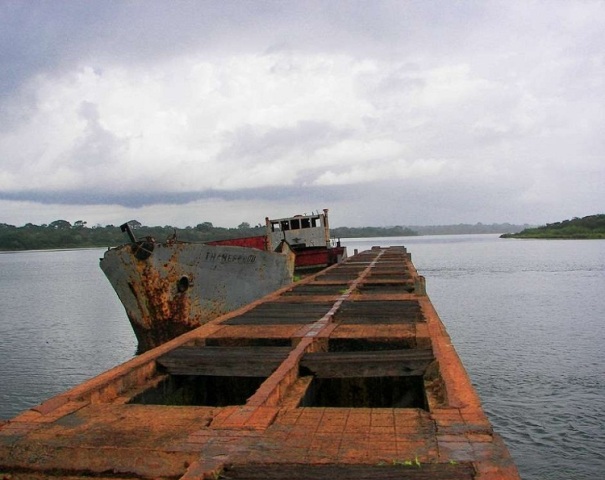Did you know that only 14% of the people in Guinea-Bissau speak its official language, Portuguese? Plough through this article for interesting and fun facts about Guinea-Bissau.
Facts About Guinea-Bissau
Guinea-Bissau, officially known as the ‘Republic of Bissau’, is a country located in the continent of Africa. The country has for its neighbors the countries of Senegal to the north and Guinea to the south and the west. The voluminous Atlantic Ocean makes its presence felt to the west of Guinea-Bissau. The country was formerly known as Portuguese Guinea, owing to the fact that it was a Portuguese colony. The country however fought for its independence from the Portuguese which it duly gained on 24th September, 1973. It was recognized as a sovereign nation a year later in 1974. The name Bissau was later added to the name ‘Guinea’ to prevent it from being confused with or mistaken for the ‘Republic of Guinea’. Guinea-Bissau at present is a member of the ‘Economic Community of West African States’, the ‘Latin Union’, ‘African Union’ and the ‘South Atlantic Peace and Cooperation Zone’. Take a step and read on to discover fun and interesting facts about the country of Guinea-Bissau.

Interesting & Fun Facts About Guinea-Bissau
-
The country of Guinea-Bissau’s situated between the countries of Senegal and Guinea, in the western part of the continent of Africa.
-
The landscape of the country mostly comprises low lying coastal plains that rise to the savanna in the east.
-
As of 2005, Guinea-Bissau had an estimated population of 1,416,000
-
The city of Bissau makes for the capital of Guinea-Bissau. Bissau also happens to be the largest city in the country.
-
Guinea-Bissau's GDP per capita is one of the lowest in the world. Its Human Development Index is also one of the lowest on earth.
-
Guinea-Bissau occupies an area only slightly smaller than three times the size of the American state of Connecticut. It has an area of around 36,125 sq km.
-
Did you know that Guinea-Bissau and the Islands of Cape Verde until 1980 were a single country? It was a coup which successfully separated the countries into two separate nations.
-
Portuguese makes for the official language of Guinea-Bissau. However, Crioulo remains a language that is recognized across all regions in the country.
-
Guinea-Bissau presently functions as a semi-presidential republic. The country’s government is headed by President Malam Bacai Sanhá and Prime Minister Carlos Gomes.
-
The people from the country of Guinea-Bissau are known as Bissau-Guineans and not Guinea-Bissauans.
-
Guinea-Bissau’s flag draws its inspiration from the flag of the Republic of Ghana. It was the struggle of the Ghanaians for freedom that inspired the people of Guinea-Bissau to put up a fight for their very own.
-
The population of Guinea-Bissau, ethnically speaking, is a diverse one. People speak different languages and do not share customs that are overtly common. A large number of the natives are farmers whose beliefs mostly revolve around traditional animism.
-
‘Gumbe’ makes for the most popular form of music in Guinea-Bissau. The genre of music is derived from the countries folk singing tradition. However, the music in recent times has taken on more than just a few political undertones.
-
The Sporting Club Bissau is the biggest football club in Guinea-Bissau and is based in the country’s capital. The club enjoys a massive fan following across the country.
-
For natural resources, Guinea-Bissau is blessed with fish, timber, bauxite, clay, granite, phosphates and even unexploited deposits of what the world’s fanatical about, petroleum!
-
Unfortunately for Guinea-Bissau, the country is plagued with environmental issues that include soil erosion, overfishing, deforestation and soil erosion.
-
40% of the people in the country of Guinea-Bissau are Muslims living in the country’s northern and northeastern part. The Papel, Balanta, Mancanha and Manjaco make for other important ethnic groups in the country.
See also
More from iloveindia.com
- Home Remedies | Ayurveda | Vastu | Yoga | Feng Shui | Tattoos | Fitness | Garden | Nutrition | Parenting | Bikes | Cars | Baby Care | Indian Weddings | Festivals | Party ideas | Horoscope 2015 | Pets | Finance | Figures of Speech | Hotels in India : Delhi | Hyderabad | Chennai | Mumbai | Kolkata | Bangalore | Ahmedabad | Jaipur
- Contact Us Careers Disclaimer Privacy Policy Advertise With Us Lifestyle Sitemap Copyright iloveindia.com. All Rights Reserved.







